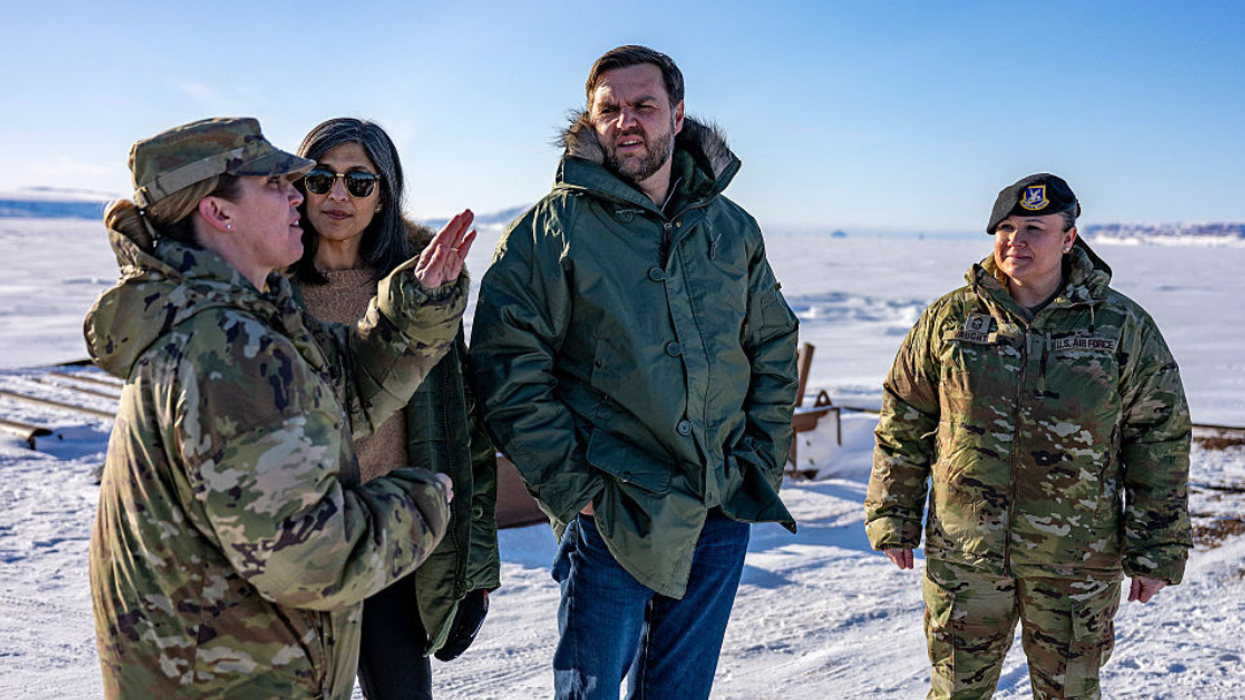When it comes to scientific advancements, it's all about trial and error.
You form a hypothesis, test your hypothesis, and come to a conclusion.
Testing your hypothesis is known as an experiment. Sometimes, experiments are completely safe and ethical, like the tests Isaac Newton ran as he discovered the Laws of Motion. However, sometimes, the experiments were horrific. The subjects used were treated cruelly, and the effects lasted a lifetime, or even longer.
Science, in and of itself, is great, but sometimes, people have committed some horrible atrocities in the name of science that we just can't get behind.
One thing I learned is that I know a lot less about the way scientists went about their research than I thought I did. Luckily for me and the rest of the uninformed, Redditors are ready to share the atrocities people have done in the name of science.
It all started when Redditor itcamefromtheimgur asked:
"What are some of the most atrocious things done in the name of science?"
Aquamen
"You don't wanna know how we learned humans are 60% water."
– LR-II
"Masochistic curiosity here, tell me."
– odd_neighbour
"Well thanks to the Japanese we know exactly how much water is in the human body."
– Angel_OfSolitude
First Aid
"I had a pair of matching blisters, one on each foot, both in the same location and of the same size."
"I tore one motherf*cker straight off to form a scab, whilst leaving the other alone."
"Hypothesis - A scab will heal faster and be less painful."
"Conclusion - I was so f*cking wrong."
– odd_neighbour
It's A Wonder They're Still Man's Best Friend
"I don't remember who but I think it was in the 30s or 40s when a scientist beheaded dogs and kept their heads alive. It's heartbreaking to watch the footage"
"Edit: I looked it up, it was Sergei Briuk-honenko and he was a soviet physician"
– _ManWhoSoldTheWorld_
"There was an American doctor that did that, too. In my opinion, the worst experiment I heard he did was transplant the brain of a dog to the abdomen of another dog. The transplanted brain would have remained conscience, but would have had no senses of any kind yet went on living for a full week."
– Yeeteth_thy_baby
Horrific
"The history of gynecology is unbelievably grim. Painful experiments on black women without any pain relief. Ugh people are awful sometimes."
– juliennethiscarrot
Umm...What?
"They used to operate on animals with no anesthetic because "they felt no pain". This one baffles me, how the hell can you have been around animals for any length of time and not see one yelp or jump because they hurt themselves? The "divine right" attitude of humans is sickening. Basically because in their opinion animals had no souls they couldn't fell pain. Wacked!"
– Weazerdogg
"They also thought black people couldn't feel pain and they used to say babies couldn't feel pain until the late 80s/early 90s. They used to do surgery on babies without anesthetic in the 80s because they won't remember it (consciously, but it causes PTSD)"
– crazyjka*s
Make Me Sick
"The experiments done on enslaved peoples in the US"
"The Tuskegee Syphilis Study"
– LexiiConn
"It wasn't just during slavery. The myth that black people either didn't feel pain, or felt a far reduced degree of pain led to some pretty horrible medical practices. Since they didn't realistically have access to healthcare for a very long time, doctors would get them to sign off on sh*t they wanted to do, often for the first time, in exchange for not having to pay for the treatment. It's horrifying."
– GreatTragedy
Some School
"The Lung Association took Canadian aboriginal kids from their parents to a school that was basically a lab to do experiments on the kids for TB. Those that died were buried and their parents were never notified. Met a gentleman who’d survived that and only had half a lung left because they’d operated on him."
– tangcameo
Ignorance May Actually Be Bliss
The Manhattan Project. Did we really have to see what happens when we split an atom? Like, guys, for real, it's not fun living knowing that the end of the world could come at any moment, you have any idea what that sh*t does to your mental health? Damn you, Oppenheimer."
– GoblinGuy3
Unit 731
"Unit 731 or Manshu Detachment 731.(1937–1945)."
"Unit 731 was responsible for some of the most notorious war crimes committed by the Japanese armed forces. It routinely conducted tests on people who were dehumanized and internally referred to as "logs". Experiments included disease injections, controlled dehydration, hypobaric chamber experiments, biological weapons testing, vivisection, amputation, and standard weapons testing. Victims included kidnapped men, women (including pregnant women) and children. The victims came from different nationalities, with the majority being Chinese and a significant minority being Russian. Additionally, Unit 731 produced biological weapons that were used in areas of China not occupied by Japanese forces, which included Chinese cities and towns, water sources, and fields. Estimates of those killed by Unit 731 and its related programs range up to half a million people, and none of the inmates survived."
– fellowcrft
Human Studies
"WW2 experiments on prisoners.. done by Mengele and Japanese nazis."
"Burning people, poisoning people, putting people in extreme cold water. They would often experiment on twins, one would be left and nothing done to him, he was the control and other would be tortured in different ways and then they would kill both and dissect to see how body reacted."
– RoronoaLuffyZoro
This Is Awful
"John B Calhoun set about creating a series of experiments that would essentially cater to every need of rodents, and then track the effect on the population over time. The most infamous of the experiments was named, quite dramatically, Universe 25."
"In this study, he took four breeding pairs of mice and placed them inside a "utopia". The environment was designed to eliminate problems that would lead to mortality in the wild. They could access limitless food via 16 food hoppers, accessed via tunnels, which would feed up to 25 mice at a time, as well as water bottles just above. Nesting material was provided. The weather was kept at 68°F (20°C), which for those of you who aren't mice is the perfect mouse temperature. The mice were chosen for their health, obtained from the National Institutes of Health breeding colony. Extreme precautions were taken to stop any disease from entering the universe."
"As well as this, no predators were present in the utopia, which sort of stands to reason. It's not often something is described as a "utopia, but also there were lions there picking us all off one by one.""
"The experiment began, and as you'd expect, the mice used the time that would usually be wasted in foraging for food and shelter for having excessive amounts of sexual intercourse. About every 55 days, the population doubled as the mice filled the most desirable space within the pen, where access to the food tunnels was of ease."
"When the population hit 620, that slowed to doubling around every 145 days, as the mouse society began to hit problems. The mice split off into groups, and those that could not find a role in these groups found themselves with nowhere to go."
""In the normal course of events in a natural ecological setting somewhat more young survive to maturity than are necessary to replace their dying or senescent established associates," Calhoun wrote in 1972. "The excess that find no social niches emigrate.""
"Here, the "excess" could not emigrate, for there was nowhere else to go. The mice that found themself with no social role to fill – there are only so many head mouse roles, and the utopia was in no need of a Ratatouille-esque chef – became isolated."
""Males who failed withdrew physically and psychologically; they became very inactive and aggregated in large pools near the center of the floor of the universe. From this point on they no longer initiated interaction with their established associates, nor did their behavior elicit attack by territorial males," read the paper. "Even so, they became characterized by many wounds and much scar tissue as a result of attacks by other withdrawn males.""
"The withdrawn males would not respond during attacks, lying there immobile. Later on, they would attack others in the same pattern. The female counterparts of these isolated males withdrew as well. Some mice spent their days preening themselves, shunning mating, and never engaging in fighting. Due to this they had excellent fur coats, and were dubbed, somewhat disconcertingly, the "beautiful ones.""
"The breakdown of usual mouse behavior wasn't just limited to the outsiders. The "alpha male" mice became extremely aggressive, attacking others with no motivation or gain for themselves. Violent encounters sometimes ended in mouse-on-mouse cannibalism."
– herobrineminecraftk
A Questionable Procedure
"Lobotomies"
– QualityKoalaTeacher
"Danvers Asylum in massachusetts had a wing just for experiments with children using both lobotomies and electro-shock."
– SpamFriedMice
What We Don't Know
"To the ppl reading the comments, keep in mind they told the public all of thesse, now imagine what they don't tell us"
– TTV_Potato_the_3rd
That's a scary thought!
Do you have any atrocities to add? Let us know in the comments.















 @kileywrestling/Bluesky
@kileywrestling/Bluesky
